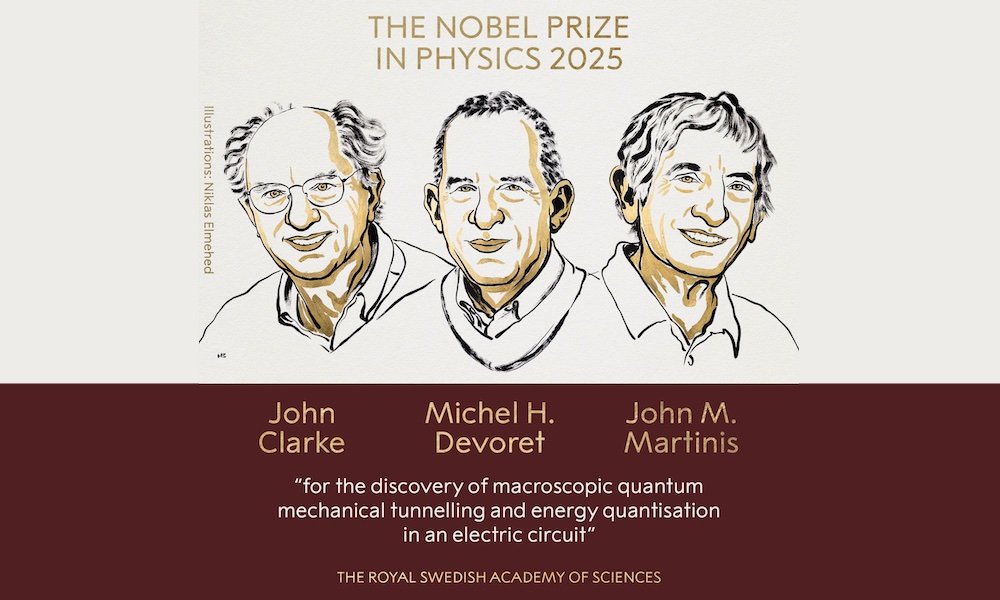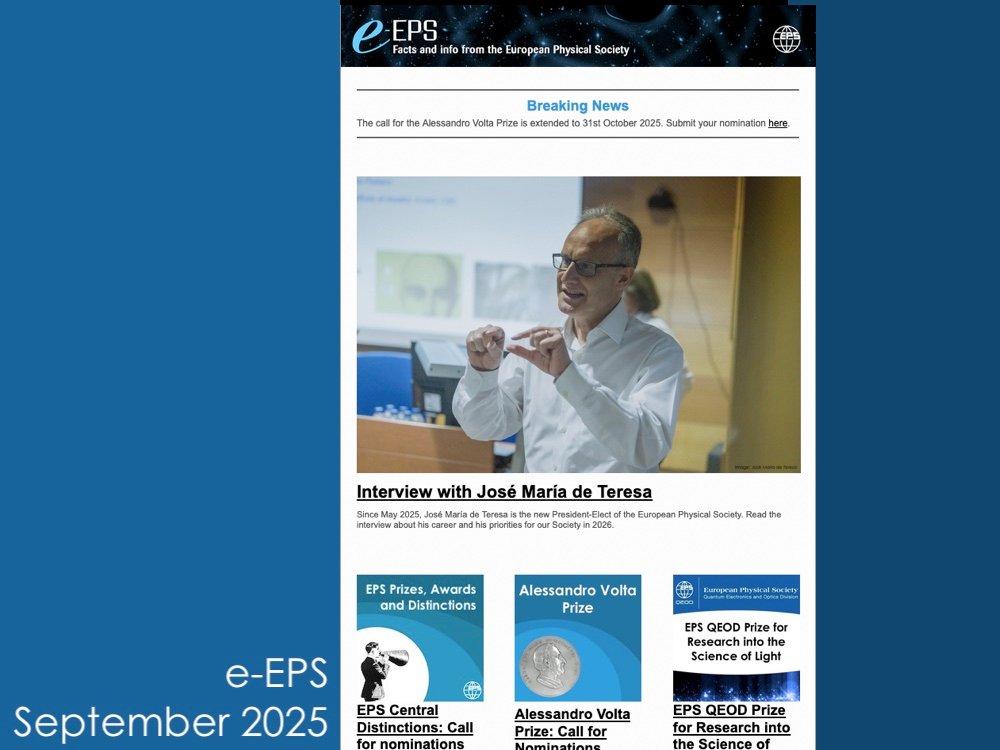Since May 2025, José María de Teresa is the new President-Elect of the European Physical Society. Gina Gunaratnam, EPS communications coordinator, interviewed Prof. de Teresa.
How did you get to know the European Physical Society?
During my PhD, I learned that one of my supervisors was a member of the Board of the Condensed Matter Division (CMD) of the European Physical Society (EPS), but I was relatively unfamiliar with EPS. However, in 2000, during my postdoc, I had the opportunity to give an invited talk at the CMD conference held in Montreux, Switzerland. I thoroughly enjoyed the conference and was able to discuss with many colleagues. In short, this conference was a great experience and a milestone in my scientific career.
Between 2021 and 2024, you were chair of the EPS Condensed Matter Division. Now you are the next EPS President- Elect. Why is it important for you to be involved in the Society’s activities? What will your priorities be as President in 2026?
In 2014, I organised one of the mini-colloquia at the CMD conference held in Paris and I was invited to join the CMD Board. Little by little, I began to understand how the EPS works and the relevance of its divisions. In the 21st century, Physics is a very broad discipline, and each division develops its own activities to achieve specific goals. I found the Condensed Matter Division to be a very useful organisation to meet every two years, keep up with the latest developments in the field, and maintain a sense of integrated community. At the same time, the EPS represents a space for all physicists in Europe and provides a meeting point for sharing the latest advances in Physics, as well as enabling collaboration across different research fields. In my opinion, the EPS is the only organisation that offers a forum for all physicists in Europe. We cannot forget that Europe is a key player but relatively small internationally, and it makes sense for national physics societies to join forces to achieve common goals.
I must admit that I enjoy participating and playing an active role in networks and scientific societies. Although it takes time, it is worth meeting new colleagues in person, sharing scientific discoveries, and making progress. During my term as President, I have an ambitious program to implement the mission, vision, and core values of the EPS. Together with the EPS office staff, the members of the Executive Committee, and EPS stakeholders, I plan to implement actions along several axes, all with the overall goal of making the EPS an even more dynamic society with a greater direct impact on more than 100,000 European physicists. Regarding the commitment of the EPS to society, we will focus on using our knowledge of physics and the tools and networks available within the EPS to reinforce European values.
Could you describe your current field of research?
I have a strong background in magnetic materials and spintronics, which I investigated in the first part of my career. Due to a large investment in nanotechnology of the Spanish Ministry of Science and the Aragón Government around 2010, we had the opportunity to set up a new lab in Zaragoza with the most advanced electron and ion microscopes at that time. Since then, I have led the activities in the lab regarding nanofabrication based on focused electron and ion beams, which my group has exploited to investigate fundamental aspects of magnetic, superconducting and quantum materials, whilst developing new techniques for efficient and high-resolution device fabrication. If I had to summarise my current research activities in one single sentence, I would say that «I develop key enabling technologies based on focused electron and ion beams to investigate how matter behaves at the nanoscale and to build efficient nanodevices».
What are the challenges of this field?
The existing technology for creating focused electron and ion beams in scanning microscopes is astonishing, allowing these beams to be focused to less than 1 nm. While exploring and patterning materials with this spatial resolution is fascinating and leads to numerous applications, this technology suffers from low throughput, for example, compared to optical lithography, which is well established in the semiconductor industry. My group has developed new nanofabrication strategies, based on the use of cryogenic temperatures or metal-organic solutions, to increase throughput, but further developments are needed to expand the range of applications. From a fundamental point of view, achieving artificial topological superconductivity is an important goal in condensed matter physics. My group and many others are working with topological insulators and superconductors to fabricate hybrid devices, with the aim of exploring this technology for quantum computing and sensing.
Why did you study physics?
As a child, I suffered through the long (three-month) summer holidays in hot Spain, which I often used to explore books on scientific topics and biographies of important scientists. Physics seemed to me to be the most fundamental and challenging science, and the one I was most passionate about. Whether this was a siren call, only time would tell. Thirty years after graduating as a physicist, I feel happy that I made the decision to study physics. In fact, representing the European physicists through the EPS for two years is a true honour I never imagined, while sweating in my humble home in Zaragoza a few decades ago.
Would you encourage youngsters to study physics and why?
Physics is a key discipline for improving our understanding of nature, as well as for the future of the European economy. It is essential to promote physics among youngsters so that the number of physicists in Europe does not decrease in the future. In a constantly evolving digital society, where children are accustomed to achieving their goals with a simple click, it is not easy to convince them that studying a discipline as complex as physics is worthwhile. However, our mission is to show them that physics is fascinating, that it allows us to understand the world around us, and that they can get excellent jobs as physicists, while contributing to the values of European society. In my opinion, this can only be achieved through an ambitious communication programme in which European physicists, especially the youngest ones, approach teachers and students in schools to conduct physics experiments, explain the type of research they conduct, and discuss the career paths of a physicist.
How would you encourage girls to study physics?
For girls, it’s important to find female role models so they can see that a girl can enjoy physics as much as a boy and that her working conditions will be conducive to developing her life’s goals. It’s the mission of each of us, both personally and through our respective leadership positions, to encourage girls to be drawn to physics and help them develop successful careers in academia and industry. I hope that soon it won’t be necessary to answer this question, as gender bias no longer exists.





